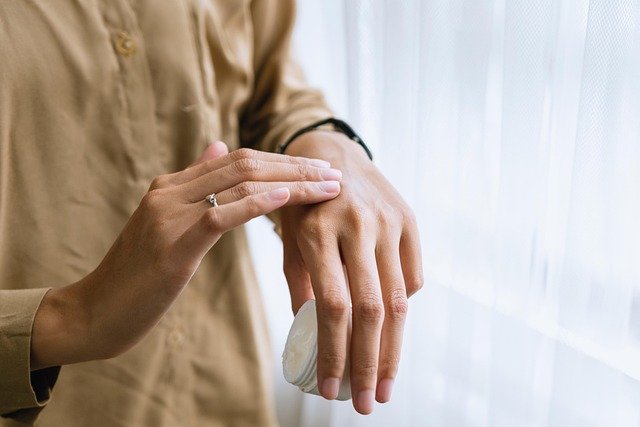Early signs and clinical indicators of acute skin infection
Recognizing acute skin infection early improves the chances of effective treatment and reduces complications. Common early cues include expanding redness, localized swelling, increasing pain, and sometimes fever. Practical wound care, timely diagnosis, and appropriate antibiotic use guided by clinical judgment are key to recovery.

Acute skin infections can begin subtly and escalate within hours to days. Early attention to changes in the skin’s appearance and to systemic symptoms helps clinicians determine whether outpatient care or urgent treatment is required. Look for a spreading area of redness, increased warmth, new swelling, or pain around a wound or previously intact skin. This article is for informational purposes only and should not be considered medical advice. Please consult a qualified healthcare professional for personalized guidance and treatment.
Early symptoms: skin infection, redness, swelling
The first signs of an acute skin infection are typically local. A patch of skin that becomes red and enlarges over time, along with new swelling and tenderness, is characteristic of conditions such as cellulitis. The affected area often feels warm compared with nearby skin, and patients may notice the skin becoming tight or shiny. In some cases small blisters or localized drainage develop. For people with peripheral neuropathy or vascular disease, visible redness might be less pronounced, so clinicians rely on increased swelling, decreased function, or a change in sensation to detect infection.
How bacteria cause inflammation and fever
Bacteria commonly responsible for skin infections include species of Staphylococcus and Streptococcus that enter tissue through cuts, insect bites, or other breaks. Once inside, bacteria trigger a localized immune response; blood vessels dilate and immune cells migrate to the area, producing inflammation that shows as redness and swelling. If the immune response is systemic or the infection spreads, patients can develop fever, chills, or a general feeling of being unwell. Recognizing fever alongside local signs typically prompts more urgent evaluation and may lead to blood tests or imaging in selected cases.
Diagnosis and follow-up: when to seek care
Diagnosis is mainly clinical and begins with a careful history and physical exam. Clinicians assess lesion size, rate of spread, presence of pus or drainage, and systemic symptoms like fever. Risk factors such as diabetes, immune suppression, recent antibiotic use, or lymphedema are important to note. When indicated, wound cultures, complete blood counts, or imaging studies can aid diagnosis. Follow-up is essential: patients should be reassessed within 48–72 hours if symptoms do not improve or if they worsen. Early follow-up confirms that the chosen treatment is working and that wound care is adequate.
Antibiotics and the issue of resistance
Antibiotics are central to treating many bacterial skin infections, but selection depends on the likely pathogens and local resistance patterns. Empiric therapy commonly targets typical skin bacteria while taking care to avoid unnecessarily broad-spectrum agents. When culture results become available, clinicians may narrow therapy to reduce the risk of resistance. Patients should take antibiotics exactly as prescribed and avoid using leftover medications for new symptoms. Overuse and incorrect use of antibiotics contribute to antibiotic resistance, which can make future infections harder to treat.
Wound care and hygiene after skin breaks
Good wound care reduces the likelihood that a minor break in the skin will progress to a significant infection. Clean wounds gently with mild soap and water, apply an appropriate dressing to keep the area protected, and change dressings according to instructions. Avoid prolonged moisture and rubbing that can further damage tissue. Hand hygiene before and after dressing changes limits bacterial transfer. Proper wound care works alongside antibiotics when needed and supports faster healing while reducing complications.
Prevention steps to lower skin infection risk
Preventive measures focus on maintaining skin integrity and reducing exposure to pathogens. Keep skin moisturized to prevent cracking, treat fungal infections such as athlete’s foot promptly, and manage chronic conditions such as diabetes that increase risk. Use protective clothing or gloves to avoid occupational skin injuries, and clean and cover cuts or insect bites early. In communal settings or healthcare facilities, good hygiene practices and appropriate infection control help limit spread. Thoughtful antibiotic use and public health measures also contribute to broader prevention by limiting resistance.
Conclusion
Early recognition of localized redness, swelling, warmth, increasing pain, or systemic signs such as fever supports timely diagnosis and appropriate management of acute skin infections. Effective care combines accurate clinical assessment, proper wound care and hygiene, judicious use of antibiotics informed by resistance concerns, and planned follow-up to ensure recovery. In situations of rapid progression, significant systemic symptoms, or underlying health risks, prompt medical evaluation is recommended.





